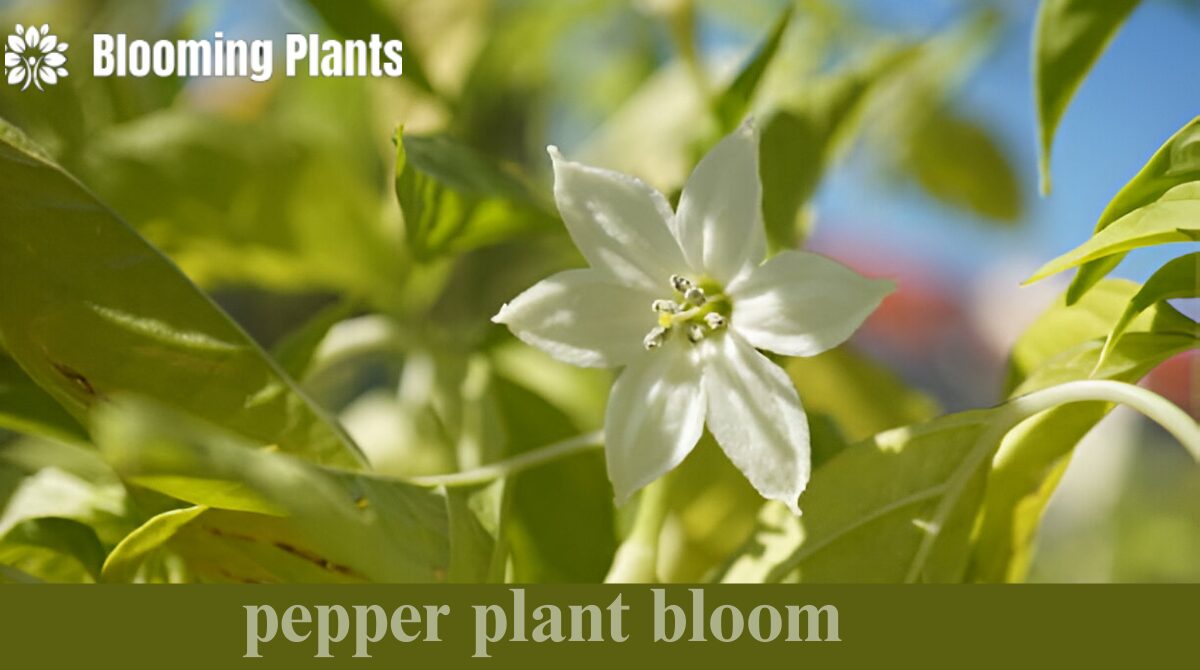Growing pepper plants can be both rewarding and challenging, especially when it comes to achieving vibrant, healthy blooms. This article provides an in-depth look at pepper plant blooms, covering every aspect from their biology to practical tips for maximizing their growth.
Understanding Pepper Plant Blooms
What Are Pepper Plant Blooms?
Pepper plant blooms are the flowers produced by pepper plants as part of their reproductive cycle. These small, delicate flowers play a vital role in the formation of peppers. Most pepper varieties produce white blooms, although some may showcase yellow or purple hues.
Anatomy of a Pepper Bloom
To better understand the blooming process, let’s break down the key parts of a pepper bloom:
| Part | Function |
| Petals | Attract pollinators with their color and scent. |
| Sepals | Protect the flower bud before it opens. |
| Stamens | Male part of the flower; produces pollen. |
| Pistil | Female part of the flower; receives pollen for fertilization. |
| Ovule | Develops into seeds after successful pollination and fertilization. |
Factors Influencing Pepper Plant Blooms
1. Light Requirements
Pepper plants thrive in full sunlight, requiring at least 6-8 hours of direct light daily. Insufficient sunlight can hinder blooming, resulting in fewer flowers and reduced fruit production.
2. Temperature and Humidity
- Optimal Temperatures: Pepper plants prefer daytime temperatures between 70°F and 85°F and nighttime temperatures above 55°F.
- Humidity Levels: Moderate humidity (40%-70%) is ideal. Excessively high humidity can prevent pollination, while extremely low humidity can lead to flower drop.
3. Soil Conditions
Healthy blooms require nutrient-rich, well-draining soil. Ideal soil pH for pepper plants is between 6.0 and 7.0. Adding organic matter, such as compost, enhances soil fertility and moisture retention.
4. Fertilization
- Use a balanced fertilizer during the vegetative stage.
- Switch to a phosphorus-rich fertilizer during the flowering stage to encourage bloom development.
Common Challenges and Solutions
1. Blossom Drop
Blossom drop occurs when flowers fall off the plant before forming fruit. Causes include:
- Extreme Temperatures: Heat stress or cold nights.
- Overwatering: Leads to root rot and weak plant health.
- Nutrient Imbalance: Excessive nitrogen encourages leafy growth at the expense of blooms.
Solutions:
- Maintain consistent temperatures using shade cloths or row covers.
- Water deeply but infrequently to avoid overwatering.
- Adjust fertilizer to include more phosphorus and potassium.
2. Lack of Pollination
Without proper pollination, flowers won’t produce fruit. This is often a problem for indoor or greenhouse plants.
Solutions:
- Encourage Pollinators: Plant companion flowers like marigolds or lavender to attract bees and butterflies.
- Hand Pollinate: Use a small paintbrush or cotton swab to transfer pollen between flowers.
3. Pest Infestation
Common pests, such as aphids, spider mites, and thrips, can damage flowers and hinder blooming.
Solutions:
- Inspect plants regularly for pests.
- Apply organic insecticidal soap or neem oil to affected areas.
Tips for Maximizing Pepper Plant Blooms
1. Pruning for Productivity
- Remove suckers (small shoots between the main stem and branches) to focus energy on blooms.
- Trim damaged or yellowing leaves to improve airflow and sunlight penetration.
2. Watering Techniques
- Use a drip irrigation system for consistent moisture.
- Avoid overhead watering, which can lead to fungal diseases.
3. Companion Planting
Plant peppers alongside beneficial companions like basil, tomatoes, or onions to improve growth and deter pests.
4. Mulching
Apply a 2-3 inch layer of organic mulch to:
- Retain soil moisture.
- Regulate soil temperature.
- Suppress weed growth.
Case Study: Boosting Bloom Production in Bell Peppers
Problem: A gardener noticed poor bloom production in their bell peppers despite healthy foliage.
Solution:
- Adjusted fertilizer to include more phosphorus and potassium.
- Added a pollinator-attracting plant, like cosmos, nearby.
- Implemented a consistent watering schedule with a drip irrigation system.
- Pruned lower leaves to improve air circulation.
Result: Within four weeks, the plants produced a higher number of blooms, and fruit set significantly improved.
Frequently Asked Questions (FAQs)
Why aren’t my pepper plants blooming?
Possible reasons include insufficient sunlight, incorrect temperature, or an imbalance of nutrients. Evaluate your plant’s growing conditions and adjust as needed.
How long does it take for pepper blooms to turn into fruit?
After successful pollination, it typically takes 5-10 days for fruit to start forming.
Can I use homemade fertilizers to encourage blooms?
Yes! A mixture of banana peel tea or diluted fish emulsion can provide essential nutrients for blooming.
Conclusion
Healthy and abundant pepper plant blooms require the right combination of light, temperature, soil, and care. By understanding the factors influencing bloom development and addressing common challenges, you can enjoy a thriving pepper harvest. Happy gardening! 🌱

